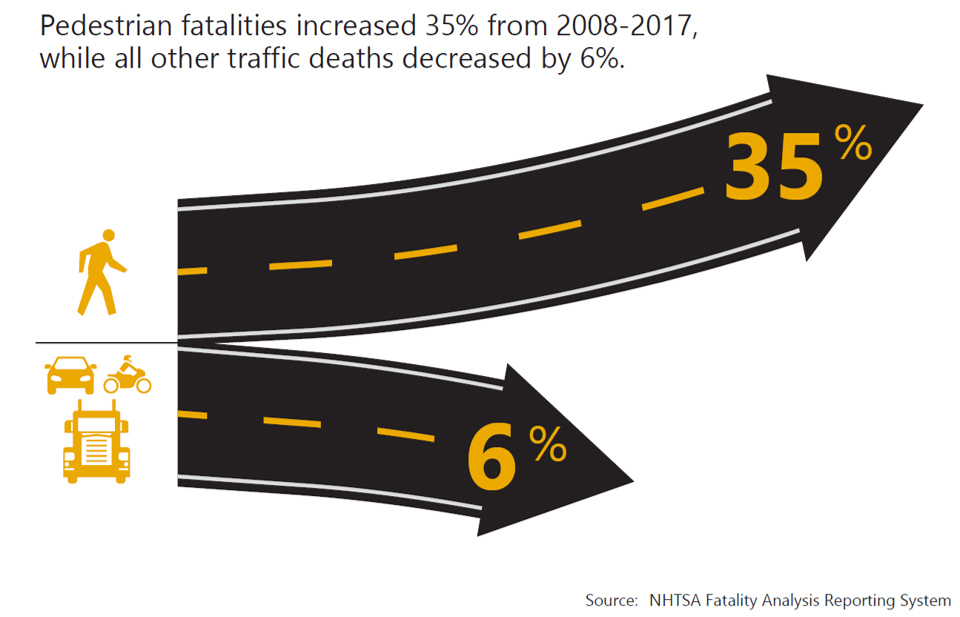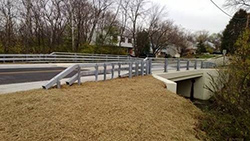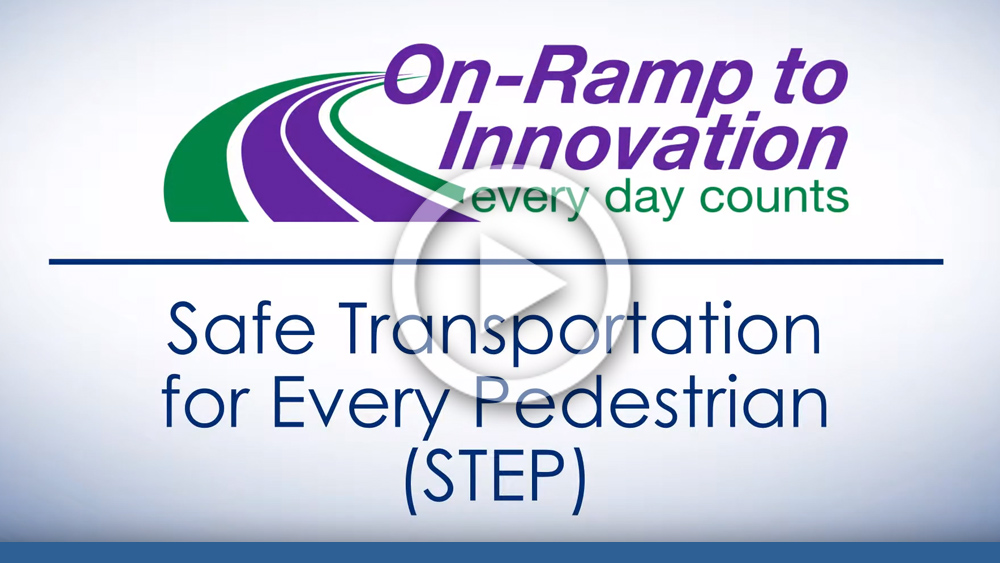October 3, 2019
Innovation of the Month:
Safe Transportation for Every Pedestrian
In 2018, an estimated 6,227 pedestrians died in the United States, according to the Governors Highway Safety Association—the highest total number of pedestrian fatalities since 1990. Pedestrian fatalities increased by 35 percent between 2008 and 2017, while other traffic fatalities decreased by six percent. The Safe Transportation for Every Pedestrian (STEP) program promotes proven countermeasures at pedestrian crossings to reduce growing numbers of pedestrian fatalities.
The seven countermeasures include: crosswalk visibility enhancements, raised crosswalks, refuge islands, Rectangular Rapid-Flashing Beacons (RRFBs), Pedestrian Hybrid Beacons (PHBs), Road Diets, and Leading Pedestrian Intervals (LPIs).
Over the next four weeks, we will look at four features of implementing STEP. They include the system—considering all pedestrian crossings and the risk factors that contribute to crashes and fatalities; the tools—countermeasures selected to increase pedestrian safety at a given location; evaluation—verified results in areas implementing STEP can lead to further implementation, and people—partnerships formed between agencies and the integration of law enforcement and public education into your pedestrian safety efforts.

STEP Resources:
The FHWA Guide for Improving Pedestrian Safety at Uncontrolled Crossing Locations details a six-step process to help agencies select countermeasures for uncontrolled crossing locations.
FHWA published 18 STEP Case Studies that highlight State and local agency practices, policies and decision-making strategies for deploying the STEP countermeasures. The case studies include installation examples with measured impacts on pedestrian safety, and practices where State DOTs integrated pedestrian safety and countermeasures into Complete Streets policy, transportation plans, and data analysis.
A set of six STEP Countermeasure Tech Sheets is also available, describing each STEP countermeasure promoted for uncontrolled crossing locations. Each tech sheet includes an illustration, cost information, design considerations, and crash reduction factors.
Finally, six STEP Countermeasure Videos are available to explain the overall purpose and design elements for STEP countermeasures. These animated videos will help educate a broad spectrum of officials and the public. You can use these videos to engage audiences at conferences, public meetings, and through other digital communications.
Watch and share our innovation spotlight video for STEP, and to learn how your State can STEP up its pedestrian safety efforts, contact Becky Crowe with the FHWA Office of Safety or Peter Eun with the FHWA Resource Center.
Bridge Bundling Initiatives Benefit Local Economies

Several State departments of transportation (DOT) have initiatives aimed at helping local agencies use project bundling to take advantage of economies of scale and faster project delivery. Using smaller bundles, they encourage local industry and contractors to participate.
- The Ohio Bridge Partnership Program put more than 200 county bridges in one large bundle for financing then broke it into smaller bundles of 2-3 bridges each for design and construction.
- Missouri's Safe & Sound Bridge Improvement Program bundles were designed to allow a spectrum of local contractors to perform most of the work.
- Osceola County, FL's project bundles resulted in 9 out of every 10 construction dollars being distributed to local contractors, boosting the local economy.
Case studies on these and other noteworthy practices are available in FHWA's Bridge Bundling Guidebook. For more information on how you can bundle projects to benefit your local economy, contact Romeo Garcia, FHWA Office of Infrastructure, or David Unkefer, FHWA Resource Center, for details.
Vermont Benefits from ATSPMs
While the Vermont Agency of Transportation (VTrans) is in the early stages of deploying Automated Traffic Signal Performance Measures (ATSPMs), it is already realizing benefits. VTrans is able to monitor and count traffic in the deployed intersections 24 hours per day. Previous manual collection occurred in cycles every 1-2 years. This heightened level of monitoring allows the State to receive reports and deploy traffic signal staff proactively rather than being reactive to calls from the public.
In one case, before ATSPM implementation, VTrans received a complaint about a malfunctioning pedestrian light at an intersection 120 miles from headquarters. In order to address this problem, the State had to deploy signal staff to observe the intersection. Initially, because VTrans couldn't see any problem with the light, they were not able to address the complaint.
Once ATSPMs were installed at this same intersection, VTrans was able to review pedestrian actuation data and determine the pedestrian push button was randomly failing, which wasn't diagnosed during field observation.
To learn more about Vermont's ATSPM program, contact Derek Lyman, Traffic Signal Operations Engineer, with VTrans. To learn how you can incorporate ATSPMs in your state, contact Eddie Curtis or Rick Denney with the FHWA Resource Center.
About EDC
Every Day Counts, a State-based program of the Federal Highway Administration’s Center for Accelerating Innovation, works with State, local, and private sector partners to encourage the adoption of proven technologies and innovations to shorten and enhance project delivery.



